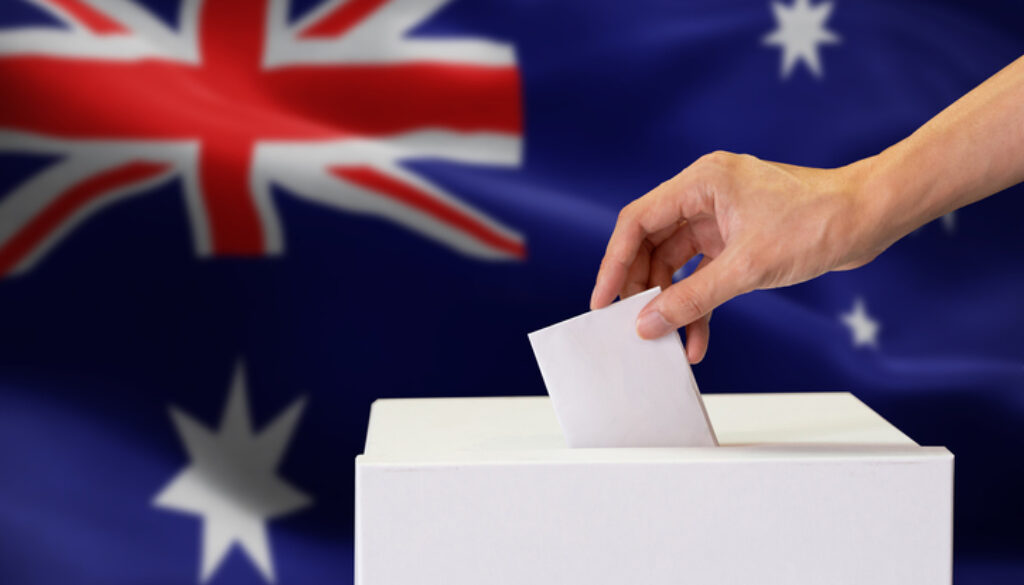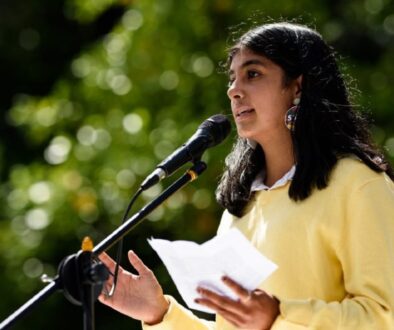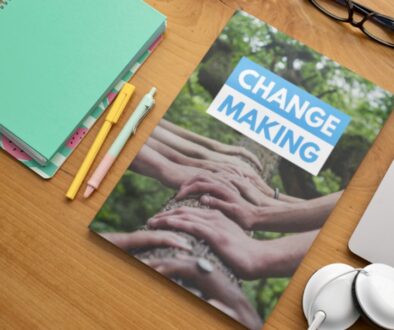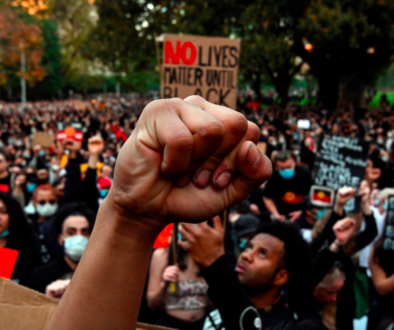Who’s not voting? Engaging with First Nations voters and young voters
Voting is one of the most foundational ways people can send politicians a message. In Australia, citizens choose the people who will represent them in government. Every 3 years at federal elections we get to make our voices heard and influence government decision-making.
Australia has a strong track record when it comes to electoral participation. One reason for this is that voting in Australia is compulsory. The enrolment rate at the 2019 federal election – the number of people who were eligible and registered to vote – was 97% (the highest enrolment rate in Australian history). In 2022 it was 96.8%. Voter turnout in 2019 – the percentage of people enrolled to vote who did actually vote – was 91.9%, and slightly lower in 2022 at 89.7%.
When you compare the situation in Australia to other countries like the US – which had a voter turnout rate of 61.4% at the 2016 presidential election and 66.8% in 2020 – Australia’s voting record seems exceptional. But if you dig a little deeper, there are certain groups being left behind.
First Nations people and young people are underrepresented on the electoral roll (the list of all citizens who are registered to vote). These groups have less influence over election results because they have lower enrolment and voting rates compared to the general public. If Australia wants to keep boasting about its participation rate at elections, more needs to be done to increase voting among these two groups.
In 2019, young people (aged 18-24) had their highest enrolment rate to date at 88.8%, followed by 88.1% in 2022. Enrolment rates are lower among First Nations people with a rate of 76.6% across Australia in June 2019 and approximately 80% before the 2022 federal election. When you look individually at the Northern Territory (NT), those figures plummet even further. Approximately 70% of First Nations people in the NT were enrolled to vote at the 2022 election. These numbers are abysmally low when compared to the national rate in 2022: 96.8%.
The disparity does not stop there. Voter turnout rates among First Nations people are also lower than in the general population. The NT’s only two electorates had the lowest voter turnout rates of all 151 electorates in 2022. Lingiari had the lowest turnout rate (66.83%) and is also the electorate with the highest proportion of First Nations people in Australia by a wide margin (41.7%). The electorate with the second highest proportion of First Nations people is Durack in Western Australia at 16.7%. Solomon, the NT’s other electorate, had the second lowest voter turnout rate in the country at 79.53%.
Because of the large First Nations population in Lingiari, First Nations people have the most voting power in that electorate. But given their low enrolment and turnout rates, their power is not being fully realised.

Why is voting lower among First Nations people, especially in the NT?
Direct Enrolment
In 2012, the government implemented the Federal Direct Enrolment and Update (FDEU) to improve enrolment rates across Australia. This system allows the Australian Electoral Commission (AEC) – which is in charge of running federal elections and enrolment – to use data from other government agencies to automatically enrol people. If the AEC collects sufficient data from agencies like Centrelink, the Australian Tax Office, and Driver’s Licence Authorities, then the AEC can directly add someone to the electoral roll. The AEC must notify the person and give them 28 days to respond before enrolling them. This gives the person time to correct any inaccurate information. The AEC can also use this process to update someone’s address if they are already enrolled.
After the FDEU was implemented, enrolment rates increased substantially, but this effect was less noticeable in the NT. This is because the AEC does not use the FDEU system in ‘mail exclusion areas’ (where mail is delivered to a single address in a community, not specific houses). This affects many remote Indigenous communities, and a large proportion of Lingiari. Even though the Commonwealth Electoral Act specifically allows the AEC to notify people through ‘electronic communication’, the AEC has chosen to only notify people through the mail, not via email.
In 2021, Matthew Ryan – a First Nations Maningrida man and Mayor of the West Arnhem Regional Council – made a complaint against the AEC to the Human Rights Commissioner (HRC). This was a joint complaint with a Galiwin’ku man who has since passed away. They firstly claim that the FDEU scheme is racially discriminatory because it doesn’t apply in mail exclusion areas where many First Nations people live. Their second claim is that remote communities do not have adequate access to polling booths.
Inadequate access to polling booths in Lingiari
While Darwin’s pre-polling booths were open for 11 days prior to election day in 2022, many remote polling booths were only open for a few days, and in some cases, hours. In addition, there was limited access to interpreters at remote polling booths which only added to the problem. This could be one reason why First Nations voters in Lingiari had a much higher informal voting rate than the general population (an invalid vote that is not counted).
Program cuts and legal barriers
There have been a number of government decisions over the last few decades that slowed efforts to increase First Nations participation in elections. These decisions pulled valuable resources from initiatives focussed on addressing low engagement.
In 1996 the Aboriginal and Torres Strait Islander Election Education and Information Service was abolished. Its role was to increase enrolment rates among First Nations people through strategies like providing election information in Indigenous languages.
Then in 2006, the Electoral Integrity Bill was passed, which increased identification requirements when enrolling to vote. This added another barrier for many First Nations people, because they are less likely to have proof of ID than the general public.
In 2017 the federal government made cuts to the AEC’s Darwin office reducing their staffing levels from 16 to 3 and removing the Indigenous Electoral Participation Program which had been introduced in 2010. The Northern Territory Electoral Commission has said that these cuts were partly to blame for low enrolment and voter turnout in the NT. Fortunately funding was restored to the program in October 2021, and will include initiatives like in-community engagement and electoral resources in Indigenous languages.
Why are young people less likely to vote?
The FDEU
For the AEC to enrol someone through the FDEU scheme, it needs to know that person’s address. Many young people leave home soon after school, often living in student residences or a string of sharehouses, which can lead to conflicting data. For example, if your address with the Tax Office is different to the address on your drivers licence, the AEC cannot enrol you. To make your voice heard at the next election you would have to manually enrol.
Lack of confidence in the election process
Another reason why young people are less likely to vote is because of a lack of confidence in the voting process, as Dr Zareh Ghazarian from Monash University told the ABC. But this lack of confidence is not the same as a lack of interest in politics or social issues. Despite what many people claim, young people are interested in politics, and care deeply about issues like the environment, mental health and housing. Dr Ghazarian thinks we need more education about voting in the final years of school to drive up participation.

Efforts to increase voter turnout
First Nations people
One group working to improve First Nations enrolment rates is the progressive group GetUp!. In 2022, GetUp! made First Nations justice and enrolment a focus of their election campaign. In the lead up to the election, Larissa Baldwin – a Widjabul woman and GetUp’s First Nations Justice Campaigns Director – spent time travelling to remote communities, talking to people about the election, issues in their communities, and voting. According to the podcast 7am, many of the people she spoke to didn’t know when the election was being held. And while not everyone she spoke to was eager to vote, they did want to talk about the big issues facing their communities, like housing overcrowding.
The Northern Land Council also ramped up efforts to increase enrolment rates before the election. They released a number of short videos featuring prominent NT community members encouraging the community to register and make their vote count.
Young people
The 2022 election saw the AEC step up efforts to engage with young people. They brought key information to where the young people were – on social media – rather than waiting for young people to seek it out themselves. As Guardian Australia’s reporter Matilda Boseley told Mumbrella “it’s all about bringing news to [the] people”.
During the election campaign, the AEC collaborated with several social media platforms to create election guides and provide an easy avenue to the AEC’s enrolment page. Twitter used Twitter Moments to provide accurate information to potential voters and encouraged first time voters to share their experience using the hashtag #MyFirstDemocracySausage. TikTok had an election guide which popped up when people searched for or viewed election content. This included explainers on topics like where to vote and how preferential voting works. Snapchat used informational videos on enrolment and voting, election stickers and the filter ‘My vote will help shape Australia’. Instagram used election stickers, and Facebook utilised feed notifications to educate people on voting and give them reminders to enrol to vote.
Not only were social media platforms themselves using their reach to engage with young people, media outlets and individuals were also harnessing the power of social media to connect with and inform young voters.
Reporter Matilda Boseley used TikTok to post a range of easily digestible videos for Guardian Australia’s ‘Voting 101’ series. Boseley produced content on topics like ‘How preferential voting works’, ‘What is pork barrelling?’, and ‘Who are the major political parties?’. Many of her videos have been viewed by hundreds of thousands of people.
The up and coming media outlet – The Daily Aus – has been using social media as its predominant form of communication from its inception. The Daily Aus is a news platform dedicated to young people and strives to create “accessible news for young Aussies.” According to their website, reporters for The Daily Aus use infographics on Instagram and Facebook, as well as TikTok videos “to engage the next generation of young, hungry news readers.” They also have a podcast and email subscription that come out every weekday. With over 370,000 follows on Instagram, and a recent announcement about $1.2 million in seed funding, The Daily Aus has certainly struck a chord with young people.
With nearly 80,000 young people enrolling to vote in the 7-day window after the election was called, it appears that some of the tactics being used to engage with young people online are working. The Greens picked up three seats in the electorates with the highest proportions of young voters; Brisbane, Griffith and Ryan. Young people are clearly making their voices heard. The AEC and other organisations should continue creating content that appeals to and resonates with young voters.
With funding for the AEC’s Indigenous Electoral Participation Program secured into the future, hopefully First Nations voting in the NT will increase at the next election. When it comes to such a fundamental right as the right to vote, we should be making it as easy as possible for First Nations people to cast a formal vote. We need increased access to remote polling booths, more engagement from the AEC with remote communities between elections, and electoral information available in Indigenous languages.
If we want to have a robust and inclusive democracy, we need to ensure that First Nations people and young people are able to exercise their right to vote and have their say at the ballot box.





July 12, 2022 @ 8:37 pm
You talk about First Nations people not knowing when the election is going to happen. It would be helpful for this group and the rest of the nation I believe to have a set election day every three years. This will take the guess work out out of the equation for everyone; and allow the AEC to start advertising the election much earlier than the six weeks there were this time.
August 2, 2022 @ 2:46 pm
Itís nearly impossible to find educated people about this subject, however, you seem like you know what youíre talking about! Thanks